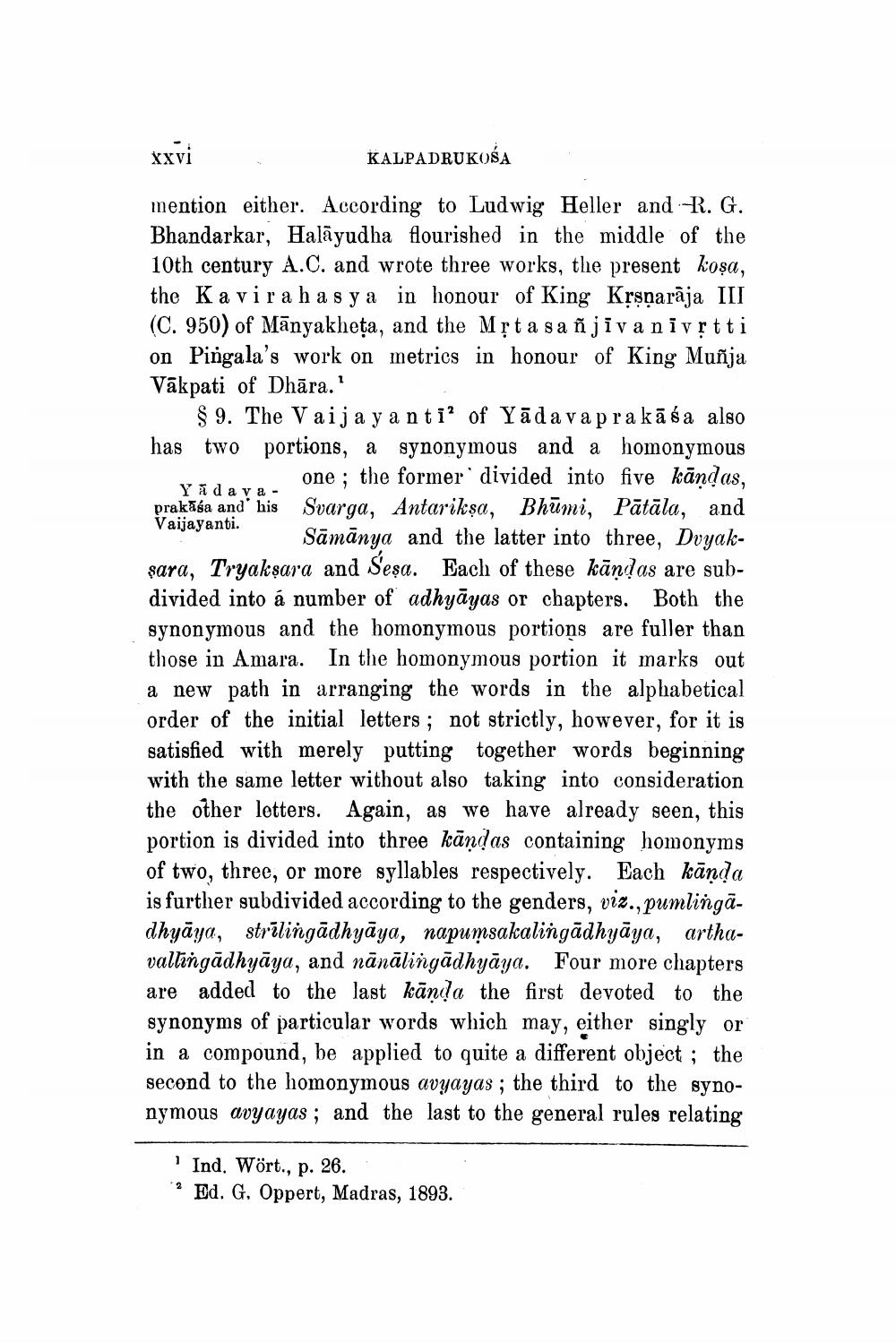________________
XXVI
KALPADRUKOSA
mention either. According to Ludwig Heller and R. G. Bhandarkar, Halāyudha flourished in the middle of the 10th century A.C. and wrote three works, the present koşa, the Ka vira has ya in honour of King Krsṣarāja III (C. 950) of Mānyakheta, and the Mộta sa ñjiva nivștti on Pingala's work on metrics in honour of King Muñja Vākpati of Dhāra.
$ 9. The V aija y anti? of Yāda vapra kāśa also has two portions, a synonymous and a homonymous
one; the former divided into five kāndas, Y āda v aprakāśa and his Svarga, Antariksa, Bhūmi, Pātāla, and Vaijayanti.
Sāmānya and the latter into three, Dvyakşara, Tryaksara and Sesa. Each of these kāndas are subdivided into a number of adhyāyas or chapters. Both the synonymous and the homonymous portions are fuller than those in Amara. In the homonymous portion it marks out a new path in arranging the words in the alphabetical order of the initial letters ; not strictly, however, for it is satisfied with merely putting together words beginning with the same letter without also taking into consideration the other letters. Again, as we have already seen, this portion is divided into three kāndas containing homonyms of two, three, or more syllables respectively. Each kānda is further subdivided according to the genders, viz., pumlingā. dhyāya, strīlingādhyāya, napumsakalingādhyāya, arthavallingādhyāya, and nānālingādhyāya. Four more chapters are added to the last kānda the first devoted to the synonyms of particular words which may, either singly or in a compound, be applied to quite a different object; the second to the homonymous avyayas ; the third to the synonymous avyayas ; and the last to the general rules relating
Ind. Wört., p. 26. ? Ed. G. Oppert, Madras, 1893.




